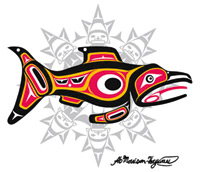COLLABORATIVE MANAGEMENT: Governance for the New Normal
Climate impacts
Sectors & strategies






This case study provides practical insights for policymakers, practitioners and local communities on how ecosystem restoration can be achieved through the utilization of both traditional and scientific knowledge. Further, the case study provides insight into how the collaborative management governance model is a critical mechanism for natural resource management - a useful alternative to the more traditional top-down approach that often overlooks local traditional knowledge.
The impacts of climate change not only stress our natural environment but also our governance structures, especially in the area of natural resource management. As our climate changes and we can no longer rely on the stable climatic systems that have allowed for rapid economic growth and development, the question of how to manage ever-changing natural environments that support stable livelihoods has become increasingly important. While these challenges may seem intractable, they haven’t stopped the villages of Selkie and Alavi in North Karelia, Finland from taking action and exploring new governance models that better align with the realities of our changing climate.
Over a two-year period, from 2014-2015, OPOE worked closely with Selkie and Alavi village members to collect insight on the value of natural resources, new approaches to resource management, and the cultural traditions that continue to link these communities to their natural environment. Through this partnership we are able to share these community perspectives and highlight their innovative community-led approach to governance.
CHAPTER 1: Getting to know Finland
The villages of Selkie and Alevi came together to create an innovative governance model for water- shed restoration. The collaborative management, or co-management, approach to the Jukajoki (pronounced yu-ka-yoki) watershed restoration project is delivering measurable environmental outcomes and changing how local and traditional knowledge is considered and incorporated into natural resource management and climate action. It also provides insight into new models of power sharing and knowledge generation that support sound ecosystem management in a rapidly changing world.
“Traditional Knowledge” is developed through the cumulative and transmitted experience of communities’ long-term attachment to place and is developed through know-how, skills and practices that are applied across biological, physical, cultural and spiritual systems. Traditional ecological knowledge is often developed through subsistence practices, such as hunting and gathering, fishing, and are passed between generations through oral histories.
“Expert Knowledge”, sometimes used synonymously with “scientific knowledge” originates from formal institutions and is commonly embodied in information produced through the scientific method; scientific knowledge is typically reductionist and in the context of environmental science, ecosystems are reduced to discrete components.
Finland is the eighth largest country in Europe, with a land area of roughly 30.5 million hectares (305,000 km2). Roughly ten percent of Finland’s total land area is inland water, with almost 190,000 lakes; about 30 percent of the total land area is classified as peatland. Much of Finland’s landscape was formed by glacial retreat at the end of the last ice age, about 10,000 years ago. A quarter of the country is above the Arctic Circle and most of Finland lies within the boreal zone. However, there are no true tundra or permafrost areas in Finland because of the warming influence of the Gulf Stream, which creates a milder climate relative to other areas in the Arctic Circle.
Finland shares borders with Russia to the east and Sweden and Norway to the west and north, and is bounded in the west and south by the Gulf of Bothnia and the Gulf of Finland. From the 12th to the 19th centuries, Finland was a province and territory under Swedish rule, and from 1809 was ruled by Russia until 1917 when it gained full independence. The region of Karelia, a historical province of Finland, has seen many border changes throughout history, and most recently was divided between Finland and Russia in 1944, at the end of the Second World War (following the Winter and Continuation Wars of 1939-1944). The areas of Karelia in present-day Finland are the regions of North and South Karelia. With a 2014 population just under 5.5 million, Finland has been a member of the European Union since 1995.
Ecological Impacts of Resource Extraction
Finland’s economy has historically been tightly linked to the country’s natural resources; while the modern Finnish economy has transitioned relatively quickly to an industrialized service-based economy, natural resource based sectors remain important, especially in rural areas. For example, forestry is a major employer for sparsely-populated rural communities and timber, pulp and paper are significant export commodities. Metal and metal products are also key export commodities and domestically, peat mining remains a contributor to regional economic development.
This economic transformation, initially driven by the exploitation of natural resources, and subsequent land-use reforms have had social and environmental effects; first, many natural resources that were once communally managed came under private ownership during the 1920s. For example, many of the newly privately owned farms included small forested and marsh areas. The increasingly dispersed ownership of forest land meant that key raw materials for the growing industry were owned by many people. "Industry thus was forced to negotiate with many partners about access to raw materials.”1 This fragmented land ownership system has caused numerous environmental impacts, especially in regard to biodiversity and habitat fragmentation. This, along with other socio-political factors following World War II lead to a strong, top-down and large-scale approach to resource extraction and management in Finland.
A more significant driver for ecological loss was the expansion of state-led forestry for pulp and paper industries after the Second World War. While land ownership was, in theory, in private hands, the state directed forestry practices and market channels towards a single market and a handful of companies that maintained monopoly control over the industry. This heavily state-controlled forest industry established a national system that valued forests’ economic functions over ecological ones, a structure that still persists to present day.
Another common practice that accompanied this economic transformation is the draining of peatlands by way of ditching. As of 2000, more than half of the land area classified as peatlands (or 5.7 million ha) had been ditched and drained (30 percent of Finland’s land area is classified as peatland).2 Peatlands were drained to increase the land area available for forestry and agriculture, road building, and peat harvesting for energy production. While the area of drained peatlands is unlikely to increase further, given a reduction in public subsidies for the first-time drainage of pristine peatlands, existing drains and peat mining sites are maintained and continue to present numerous environmental and economic challenges.
Peatlands - A Global Climate Context
As the previous section outlines, natural resources in Finland have been primarily valued in economic terms (e.g. highly valuable commodities for industrial economic growth). However there are numerous alternative values provided by preserving intact - and restoring damaged - ecosystems. The following section is an overview of the value of peatlands within a global climate context.
Peatlands are one of the most valuable global carbon reserves, second only to the ocean. Globally, peatlands cover only three percent of the world’s land area, but contain more carbon than the world’s entire forest biomass.3 In climate change terms, this means peatlands are uniquely valuable carbon sinks, the preservation of which is critical to maintaining natural carbon cycles that help stabilize our global climate.
When peatlands are drained, the once preserved greenhouse gases are released into the atmosphere and surrounding surface water (additional emissions are released when the peat is burned for electricity production). These drained peatlands constitute a disproportionately large climate burden; fifteen percent of the world’s peatland area has been drained, and while this is only 0.4% of the world’s land area, it accounts for five percent of all anthropogenic carbon emissions.4 Finland, one of the most peatland rich countries in the world, has implemented the most extensive peat drainage program in history, with less than 40% of the country’s peatlands still intact.5
Beyond contributing to global climate change, draining peatlands reduces the adaptation potential of these valuable ecosystems by causing localized environmental impacts, including a loss of capacity for water purification, flood control, and habitat for specialized biodiversity.6 These immediate environmental impacts also limit the adaptive capacity of Finnish communities that are partly dependent on natural resources for subsistence food sources as well as cultural connections to place.
The extensive use of peatlands in North Karelia has caused additional and unique environmental challenges for local communities and ecosystems. The soils of the Jukajoki watershed are highly acidic, which, as a result of the extensive ditch networks and peat mining sites, cause extremely acidic rushes of water to flow into adjacent rivers and lakes after large rainstorms and snow melts, further stressing an already damaged ecosystem. These rushing waters also carry organic substances and particles that build up in lakes, further disrupting the natural lake ecosystems and limiting the adaptive capacity of native plants and animals.7
The Challenge of Perspective
While the environmental effects of this land-use system are many, there is also high potential for climate mitigation and ecosystem restoration in the long term. In terms of climate mitigation, substantial reductions of emissions can be achieved by “rewetting” drained and damaged peatlands (rewetting includes reversing drainage, or raising the water table).8 In climate adaptation terms, rewetting also builds the adaptive capacity of ecosystems to handle climate-induced stresses resulting from changing and increasingly variable patterns; it can also contribute to the strengthening of biodiversity through habitat restoration.
While there are multilateral policy agreements that support the rewetting of peatlands, implementation of this relatively straightforward restoration practice is often complicated by social, political, and economic factors.9 For example, the process of identifying “degraded” environmental sites for restoration raises the question of how to define degradation. “What degradation is from one perspective may be seen as progress from the other. A forester may have a different view from a conservationist looking at a forestry drained peatland.”10 The challenge of multiple and different perspectives complicates the implementation and governance of ecosystem restoration and management.
Because stakeholders value resources in different and sometimes competing ways, resource management systems are commonly developed and controlled by a small set of stakeholders who hold similar and easily compatible interests and values. This dynamic raises an important question: how to overcome the limitations of narrowly defined resource management projects and systems? This question is of particular importance within the context of climate change - as we move from a stable climate paradigm, our governance systems also need to be adaptive, recognizing the complex synergies between resource users, the health of natural environments, and local communities that have knowledge of, and often personal interest in, sound resource management.
CHAPTER 2: Collaborative Management on the Jukajoki
In 2010 and 2011 two massive fish die-offs triggered the local communities of Selkie and Alavi to take action. Their actions are not only providing measurable restoration outcomes for the Jukajoki watershed but their innovative approach to resource governance brings together varied perspectives and values, and is providing an alternative to the common, top-down approach.”
Jukajoki - Redefining ‘Unproductive’
Intensive peat ditching and mining throughout Finland became the norm in a relatively short period from the 1950s-1990s. This intensive resource extraction system affected and framed the value of peatlands in national policy terms - specifically, peatlands were seen as having the highest value as an extractive resource in support of central industries including forestry, farming, and energy. This value framing of peatlands is heavily dependent on “Expert Knowledge” (knowledge that originates from formal institutions), and has until recently been dismissive of local knowledge and experience.
This framing excluded the value of peatlands as culturally significant areas that connect Finnish communities with traditional and subsistence practices, as unique habitats that support biodiversity, or in global climate terms (e.g. critical carbon sinks). If a peatland wasn’t being used for central industry it was deemed “unproductive”.
However, the events leading up to the Jukajoki restoration project have started to shift this dynamic by opening the door to a new power and knowledge sharing approach to resource and ecosystem management.
Linnunso Timeline
The following timeline outlines the evolution of the restoration of the Linnunsuo wetland, a former peat mine, and the creation of the collaborative management council. The restoration of the Linnunsuo wetland is just the first step in a long-term approach to restoring the entire Jukajoki watershed.
The 1960s
The 1980s
2003
2010
2011
2012
2013
2014
Linnunsuo -- A Pristine Marshland
Linnunsuo -- Ditching and Peat Production
At this time, ditching pristine peatlands was very common throughout Finland. By lowering groundwaters, ditching allows for the development of new land areas for forestry, agriculture, and peat mining.
However, this increase in “productive” land area comes at a cost to natural ecosystems, local habitat, and the communities that are dependent on a healthy marsh and wetland ecosystem to maintain subsistence and cultural practices.

Peat ditches near the Jukajoki, Finland. Photo: Tom Miller, 2015
Community Observations -- The Problem of Perspective
In response, the company and state agency responded that VAPO’s actions were legal, given their ISO-approved environmental management system that used the "best available technology". Further, they stated that the impacts local communities experience were not significant and that “established norms cannot be deviated from base on observations, experiences and perceptions.”(12. Mustonen, T. (2013) p. 5) Because state and company water monitoring systems did not register the impacts that local community experienced, they were dismissed.
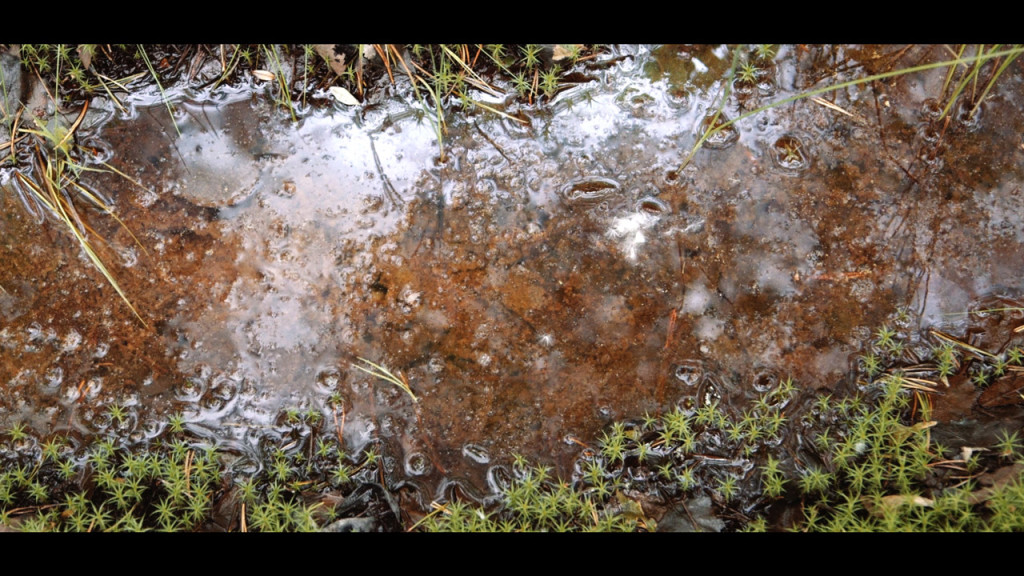
Iron runoff near the Jukajoki, Finland. Photo: Tom Miller, 2015
Fish Death -- The Breakdown of Formal Monitoring
In spite of recording highly acidic waters, VAPO contested the source of the acidic discharges and dismissed local community concerns about the peat mining site. While chalk stone dams were installed on the Linnunsuo discharge ditches to filter iron sulfides, the narrative presented by both VAPO and the state environment agency framed the acidic discharges as an unexpected event, despite local observations dating back to 2003.
By the fall, local and international media attention helped to raise the profile of the impacts and helped to establish additional monitoring and mitigation efforts on the site.
Satu Hassi, a member of the European Parliament stated: “I have learned peat production killed fish in Kontiolahti...The strangest thing is that permits were valid. Therefore there must be something wrong with the way these permits are issued to peat production sites. Current process does not assess watersheds, only the single area peat production sites are surveyed. (14. Mustonen, T. (2013) p. 7)

Contains data from the National Land Survey of Finland, Basic Map Raster (printing color; N5441L, N5441R, N5442L, N5442R), received on May 19, 2015.
Fish Death -- Perspectives Start to Shift
This all changed in June when, after a prolonged dry period and high temperatures, a series of heavy rains led to a rapid discharge of highly acidic waters from the VAPO Linunsuo peat mine. Again, local fishermen were the first to observe the mass fish die-off. After having a criminal complaint filed against the company, VAPO discontinued production on the Linnunsuo site 2 and agreed to create the largest man-made wetland in Eastern Finland, over 120 ha on the suspended production site.
Heavy media attention helped to raise the profile of the environmental contamination in the Jukajoki and pressure for restoration after almost 25 years of peat production on the site.
Restoration -- The Beginning of a New Narrative
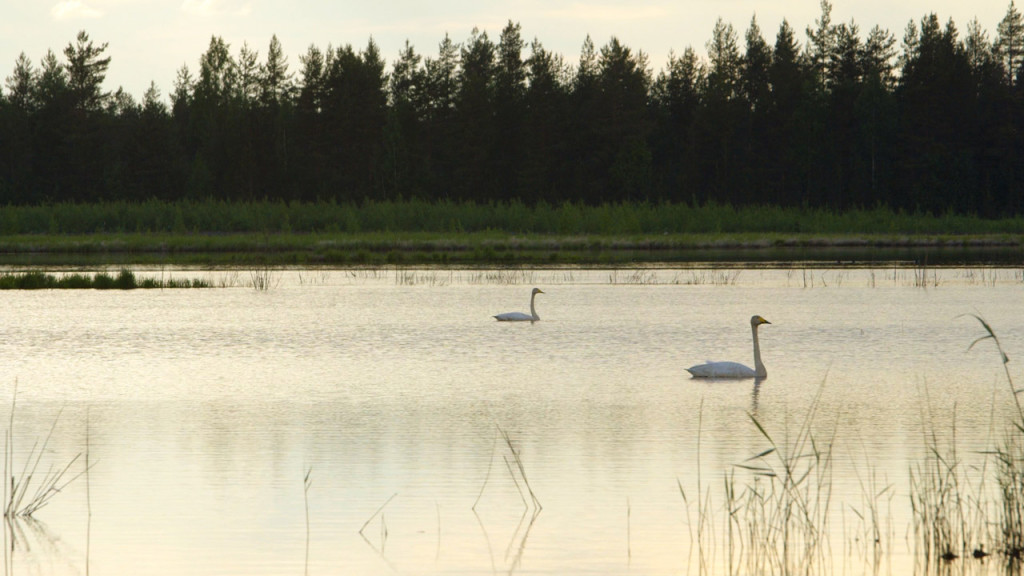
Swans on the rewetted Linnunsuo site. Photo: Tom Miller, 2015
Co-management -- Implementing a New Narrative
Jukajoki -- Restoring the Watershed
The work doesn’t stop at the Linnunsuo wetland - in the short term, the goal is to restore the entire Jukajoki catchment area using traditional knowledge and science as equally valued forms of knowledge production and by 2025, to have restored lake Jukajärvi and inflowing river bodies, beginning the return of lake trout and possibly salmon. In the long term, the vision is to establish a ranger program, providing economic opportunities to local communities, establish a stable governance and co-management system for the entire watershed, including a monitoring program that incorporates traditional knowledge and science.
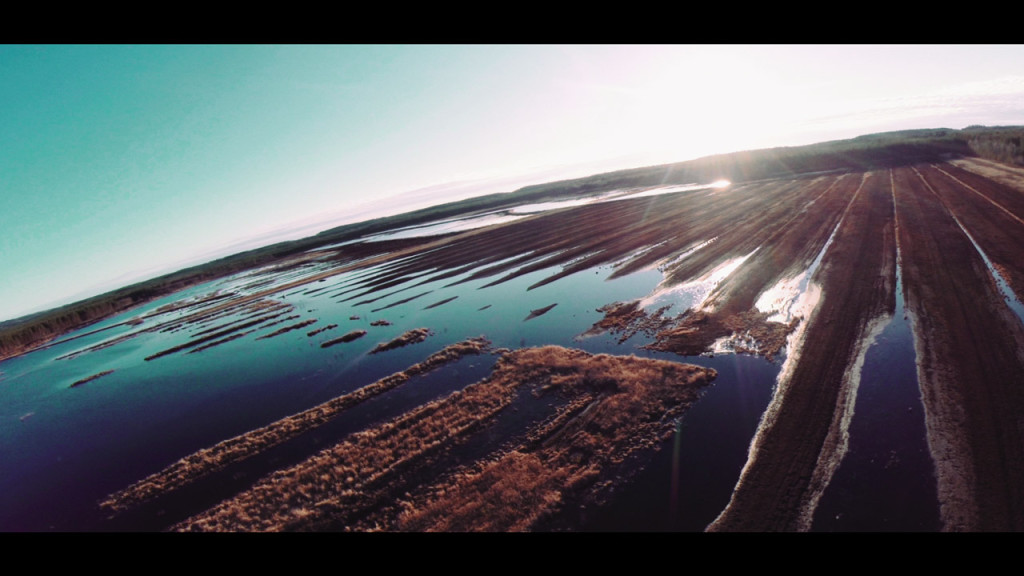
Rewetted Linnunsuo wetland, Selkie, Finland. Photo: Tom Miller, 2015
Designing a New Approach
As part of the management of the rewetted and restored watershed on the Linnunsuo site, a KHS team (käyttö- ja hoitosuunnitelmatyöryhmä) has been established. This team, or land use and management group, functions as the legal collaborative management body responsible for the ongoing environmental and governance functions over the site.
The primary functions of the co-management council are to: 1) manage the physical restorations on the Linnunsuo site, 2) provide the formal and legal space to foster knowledge exchange between different perspectives and users of the site, and 3) to serve as a dynamic learning environment that supports “learning by doing” in an iterative and adaptive manner.
For example, inherent to this governance structure is the equal value given to both scientific and local-traditional knowledge. However, how this affects local uses and monitoring of the site is ever evolving based on social and ecological changes.
Tero Mustonen, Head of Selkie Village and President, Snowchange Cooperative, describes the fundamental principles of Collaborative Management.
Co-management on the Jukajoki
New linkages and knowledge exchange
The Linnunsuo co-management council brings together multiple perspectives, assets, and values. This new governance approach facilitates dynamic relationship building and shared decision-making between public, private and community partners. The co-management council is currently the most complex of its kind outside Sámi areas in the Nordic countries. New relationships have been built between users (e.g. between hunters and birders) and across perspectives and values (industry (VAPO) and communities are now sitting at the same table for the first time). The new connections emerged when the villages and local community actors demonstrated their strong commitment to establishing local governance control, partially by leveraging national and international media outlets and by securing restoration funding through the EU.
Co-management council activities and roles
Co-management council partners
The co-management council meets in person twice per year, with regular contact between members via email.
State agencies provide technical, staffing and legal support; landowner; financial resources and restoration funding. While there are multiple state agencies are involved, each brings a unique set of values and interests to the table.
Universities provide “science flow” of information into decision making. UAS - Karelia is hired by the Village of Selkie to conduct ongoing monitoring and habitat surveys. The UEF, with grant funding of almost €800K, provides a multi-disciplinary assessment of the Jukajoki restoration conditions, catchment-wide.
Civil society and community organizations provide “traditional knowledge flow” of information into decision making. Many perspectives are represented through these organizations and communities, each with different values and interests for the site and its associated activities; they also provide fundraising and grant support for restoration activities.
Private sector firms provide technical support and construction services, throughout the catchment area. Further, additional private sector activity supports the local economy, mostly through tourism (site visits), professional and creative services (e.g. photography), and event support (catering for large tours and educational events).
Success is a Very Big Wetland
The Jukajoki project is achieving measurable environmental outcomes and creating new linkages between and among local and state interests.
Village residents and project partners share success stories from the Jukajoki: Tero Mustonen discusses the symbolic value of the Ruukkisuo wetland unit, Kaisu Mustonen discusses the ecological and social benefits coming from the rewetting of the Linnunsuo wetland, and Markku Eskelinen and Harri Kontkanen describe the unlikely, but successful partnership between local birding and hunting associations - a partnership that is yielding successful resource management outcomes.
The co-management governance system and the restoration of the Linnunsuo wetland are just the beginning for restoration efforts throughout the Jukajoki catchment area. Over the next few years, additional man-made wetland units will be installed along old ditches that feed into lake Jukajärvi and the Jukajoki river.
Restoration activities will continue to contribute measurable environmental outcomes, as well as strengthen the connection between science-based and local-traditional knowledge production and exchange. By 2025, following the installation of wetland units throughout the catchment area, restoration will shift to the actual lake and river bodies, with the goal of supporting the return of lake trout and possibly spawning lake salmon.
In the long-term, the vision is to establish a ranger program that provides economic opportunities, and a stable and long-term governance and monitoring programs that incorporate science and traditional knowledge.
A Model for National and Global Change
While the Jukajoki restoration project is the first of its kind in Finland, it is quickly affecting other watershed and ecosystem management efforts around the country. A co-management project (Näätämö) in the Sámi area of Finland is closely following the Jukajoki model and a similar watershed-wide restoration project (Kuivasjärvi), is underway in West Finland. However, there are a number of implementation challenges yet to be overcome to achieve the project’s long-term goals. For example, knowledge exchange between state and local actors is not always smooth and it takes diligence to ensure these new channels are integrated into existing structures (especially at the state level). The changing political and financial context in Finland pose additional implementation challenges; as funding is cut from the state environmental authority, limited resources and staff turnover can significantly limit implementation.
In spite of local implementation challenges, the Jukajoki project has already served as a global model for ecosystem restoration and is informing projects from Canada to Australia. The Jukajoki approach breaks the mold of traditional ecosystem restoration and management - a model that separates local communities from natural and communal resources. It also demonstrates the value of local-traditional knowledge as equal to scientific knowledge. Finally, co-management provides an opportunity to coordinate land uses, while respecting private land ownership and rights..
CHAPTER 3: The Power of a New Perspective
As we enter the new normal - shifting from a more predictable climate paradigm to one of greater extremes and variation - our governance systems need to mirror these ecological transpositions as they emerge. The level of uncertainty of what these climate-induced shifts will look like in specific localities, especially over long periods of time, requires our governance systems to have the capacity to adapt to these ever-changing dynamics. Adaptive capacity, in the climate change context is often discussed in terms of reducing vulnerabilities to climatic extremes. Building adaptive capacity is less about implementing specific measures, but about ensuring the capabilities of actors to respond positively to change. Because co-management at its core “is a vehicle that is constantly structured and rebuilt”, it is a system that can help us better govern the uncertainties of the new normal.15
While the complexities of co-management shift and vary to local conditions, there are four core elements to a well-functioning co-management system. These include: (1) power sharing between different, and often-times imbalanced actors; (2) a partnership between public and private actors; (3) the understanding of co-management as a process of evolution through learning by doing, not a fixed-state; and (4) the full use of the knowledge base within the governed area.16
The Jukajoki restoration project includes all four elements of a co-management system, each continually evolving. One of the most unique elements of the Jukajoki case is the shift in perceptions about the role of local-traditional knowledge in resource management in Finland. While the shift in perspective may not yet be nation-wide, the precedent established by the Jukajoki project opens the door for other co-management systems throughout the country. In the climate change context, local communities hold valuable insights into historic ecological patterns, how these patterns and systems are changing, and the socio-economic implications of these shifts. Co-management, as a governance system for managing climate adaptation and mitigation efforts, provides a vehicle for incorporating local-traditional and science-based knowledge, as equally relevant streams of knowledge.
Local-Traditional Knowledge in Selkie, Finland
In the context of the Jukajoki restoration project, Selkie village residents provide local-traditional knowledge through experience-based monitoring and evaluation practices. While this knowledge base is founded on the day-to-day experiences of villagers in their local environment, their observations are not formed in isolation, but within the context of a long place-based history.
Kalevala Poetry
A deeper level of tradition emerges through the so-called Kalevala poetry and the incantations that have been documented in the catchment area from the early 1800s onwards. These materials constitute a very rich and crucial source of cultural heritage and a ‘baseline’ for the communities involved in the work.
Read one of the poems
Kalevala Poem
Karuliina Kukkonen, at about the age of 50, sang the following Kalevala–style oral poetry verses, 1895, Mönni, North Karelia, Finland
Kuin vetonen vierettelen
Kuin rastas lahossa laulo
Taikka puussa tuorehessa
Kärki hongan konkelossa
Koskelo kiven kolossa
For the joy of it
Like the songbird
Just like a thrush singing on a rotting tree
Or on a fresh wood
Like a woodpecker on a pine tree
Merganser in the hole of a rock on water
- Translation, Tero Mustonen
Traditional ecological knowledge
Similarly, oral histories from community elders, old photographs, diary and fish-catch entries, and historic maps are of extreme relevance regarding the human occupation of the catchment area.
The region of Karelia has been home to many different communities and people and has seen a complicated history of occupation by, and immigration of, different peoples, cultures and communities. The cultural influences of the last half century have been documented through place names, church and official records, and historic documents. Many of these cultural legacies reflect the local community’s relationship and understanding of their natural environment.
Historic place names often reflect the relationship between local communities and the natural environment.
Havukkalampi: The lake of the Golden Eagle, later Lake of Hawks
Lohilampi: Pond of salmon
Heinävaara: Hill of hay making
Modern mechanisms for knowledge production in Selkie, Finland
In contemporary practice, local-traditional knowledge is based on land use and occupancy throughout the catchment areas, mainly from:
Cultural, subsistence, and sports fisheries
Fish traps, winter and summer seining (net fishing), trolling, and other fisheries provide a sense of the stocks, quality and movements of fish, including changes in water quality and changes in spawning areas.
Hunting
Village members from Alavi and Selkie harvest beaver, moose, bear, lynx, forest birds-such as forest grouse and capercaillie-as well as duck and goose species in the catchment area. These hunting trips provide observations and views on the changes in terrestrial and aquatic habitats.
Berry-picking, small-scale forestry, mushroom picking
The quality of berries, especially those dependent on marsh-mires, such as cranberries and cloudberries, are indicators of wetness and water levels.
Sports and leisure activities
Swimming, boating, hiking, running and other forms of recreational uses provide occasional observations of change.”
In the Jukajoki context, local and traditional knowledge is not replacing scientific observations and data, but is a parallel stream of information that is informing both the management process and on-the-ground restoration activities.
Local Observations - Weather Changes in the Boreal North
Local-traditional knowledge is also informing the climate adaptation components of the Jukajoki restoration effort. As local community members observe changes in local weather patterns, these observations inform management practices throughout the catchment area. For example, local fishermen are using their observations of changes in spawning patterns and timing to inform stream restoration efforts throughout the catchment area.
Tracking the new normal-examples of community-observed weather changes
Community members in Selkie are starting to identify shifts in local weather patterns, and while no individual change or deviation from observed averages can be solely attributed to climate change, these local observations highlight the breadth and depth of knowledge that local community members hold about their natural environment.”
Explore Local Observations
Tero Mustonen discusses the value of local community observations in understanding the shifting weather patterns in the boreal north. Local communities can be the “sensors”, picking up on and tracking the highly unpredictable changes taking place in our natural environments.
Heikki Roivas shares his observations of changes in fish spawning patterns and timing in the Jukajoki catchment. Increased in temperature and the inconsistency in weather patterns are reducing spawning numbers.
Marko Karhu describes an increase in the severity of weather patterns and how changes in snowfall have affected traditional hunting patterns.
Conclusion - Lessons Learned
This case study shows that ecosystem restoration needs to be tailored to local challenges and needs, this is especially true within the context of climate change. There is no one size fits all approach, however, there are lessons to be learned from the Jukajoki restoration effort that can be translated to climate change efforts the world over.
Power-sharing
The ecological successes that are emerging from the Linnunsuo wetland restoration effort are made possible because of the co-management council’s commitment to power-sharing between stakeholders. While demonstrating a true commitment to power-sharing takes considerable time and effort, the results are invaluable: because no single entity solely controls the restoration and ongoing use of the Linnunsuo site, stakeholders each take on responsibility for its long-term success. For example, the hunters and birders share equal stakes in ensuring the health and long-term presence of the rare birds that returned to the wetland, while also creating the space for the continued practice of the communal hunt. Further, a local landowners willingly donated part of his property to create a man-made wetland unit that is providing direct ecological benefits to the watershed, something that would not be possible without the intense and meaningful involvement of the local community as an equal partner in this effort.
Public-private partnership
While the restoration of the Jukajoki watershed is providing measurable ecological benefits, and will have long-term climate mitigation and adaptation outcomes, it is clear that these environmental outcomes are not the sole reason behind this effort. The cultural and economic values that come from the restoration of the Jukajoki watershed are equally important. By creating a strong partnership between public and private actors, the project is able to accrue a number of co-benefits that meet the needs of a diverse set of stakeholders. This partnership also means that the costs of achieving this suite of outcomes are lower than if each objective was pursued in isolation.
Learning by doing
Another core value of the Jukajoki restoration project is to approach the on-the-ground restoration efforts and governance approach as a continual process of evolution rather than a fixed-state. This means that all participants are involved in active learning. Community members learn about ecosystem restoration and scientific monitoring approaches, policy-makers learn to share decision-making power and local land use decision-making with local communities, scientists learn to cooperate with public and private parties that are living and working in the area. Through these opportunities for active learning, the collaborative management council is continually evaluating what they are learning and finding ways to improve what they are doing.
Full knowledge base
One of the most important outcomes of the Jukajoki watershed restoration project is the impact it is having on how people think about community-based ecosystem management and restoration. The traditional top-down model for ecosystem and natural resource management broke down in the context of the Jukajoki, with the formal or ‘expert’ systems failing to detect and understand the watershed-wide damages caused by peat mining and other land uses in the area. However, by actively engaging and valuing the local-traditional knowledge that community members hold, and incorporating it as an equal information stream to ‘expert’ or scientific knowledge held by formal institutions, the Jukajoki project is demonstrating improved ecological outcomes. Similarly, the Jukajoki case demonstrates that innovation does not always require inventing something new. Sometimes reinventing old practices, by valuing traditional knowledge, can bring about innovation and valuing traditional knowledge in the context of new situations (e.g. a changing climate).
Credits
Our Place On Earth
Our Place on Earth is a project of PrettyGoodProductions. PGPs' Mission is to creatively depict our beautiful and complex reality through film, art, and the written word.
info@prettygoodproductions.net
Community capacity: Enabling Local Leaders, St. Vincent and the Grenadines
Share this story
Post on Facebook
Tweet this
Share to Google+
Writer and concept design: Nuin-Tara Key
Editorial advisor: Patrick Pringle, Tero Mustonen
Video production and editor: Tom Miller, PrettyGoodProductions
Web developer: Lucas Balzer
Multimedia producers: Nuin-Tara Key, Tom Miller
Maps: Planned restoration sites, map, © Snowchange, 2015
Historic map, Produced by Gylden in 1859 (scale 1: 100,000) © Timo Meriluoto, 2015
Partners
The OPOE team would like to extend a special thanks to the villages of Selkie and Alavi, and Tero and Kaisu Mustonen, your support and guidance made this experience possible.
Anonymous | Genevieve Anderson | Michele Anderson | Brianna Ayres | Richard Barrett | Thomas Beatty | Paul Benson | Rajiv Bhatia | Hilde Binford | Sondre Bjordal | Joan Blythe | Mark Bosnian | Danielle Boul | Gordon Brown | Emily Brownlee | Elizabeth Burger | Rex Burkholder | Meghan Burnett | Alyssa Carlson | Molly Chidsey | Marion Christ | Alison Colwell | Caleb Cressman | Lindsey Cressman | Michele Crim | Bea Davis | J. Claire Dean | Tony DeFalco | Ali DeMersseman | Lee Dunne | Kim Ellis | Roger Espinoza | Carolyn Faszholz | Amanda Finke | Sharon Fujioka | Ted Fujioka | Kara Griffin | Caroline Haas | Corie Harlan | James Harrison | Matt Hayes | Brien Hemann | Melissa Herlitz | Jillian Hicks | Kyra Hill | Adam Hixon | Mike Hoglund | Kai Hsing | Juniper Hunter | Diane Husic | Ivan Interfeld | Gary Jacobs | JoEllen Jacobs | Amanda Johnson | Tom Johnson | Mike Jones | Maya Kamoshita | Ina Karish | Sheryl Kelsey | Melanie Ladygo | Elisa Lamont | Alyssa Latuchie | Karen Latuchie | Karin Laupheimer | Caroline Leary | Annie Lee | Lou Leonard | Jonas Lerman | Danielle Liu | Eli Madrone | Juliana Madrone | Sarah McCarty | Andrea McDowell | Chris Miller | Mark Miller | Paula Miller | Susie Miller | Ellen Millick | Elizabeth Milner | Adrian Mishek | Tacey Mishek | Katy Mistretta | Judy Mosher | Josh Naramore | Melanie Nead | Angie Noriega | Nigel Noriega | Libi O'Brien | Teresa O'Donnell | Mikell O'Mealy | Mary-Rain O'Meara | Alyssa Phelps | Bonnie Porter | Lizzy Prestel | Cheyenne Purrington | Cynthia Rancatore | Dan Rasay | Jon Ray | Christian Rebholz | Kalama Reuter | Beth Rodin | Natalia Ronceria Ceballos | Katie Rosinsky | Sayuri Sasaki Hemann | Ahn Scanlon | Ali Schneider | Lauren Schneider | Dean Scott | Dan Silk | Ellen Simmons | Oliver Smith | Carrie Snow | Kathryn Sofich | Laura Spidell | Cary Stacey | Erika Street | Nik Strong-Cvetich | Michael Sulis | Terra Tolley | Rory Turner | Daniel Vance | Annie Von Burg | Benjamin Waddell | Jason Ward | Ann Weinstein | David Weinstein | Aubrey White | Jodi White | Ken White | Chris Williams | Martin Wilson | Steve Zavetoski


